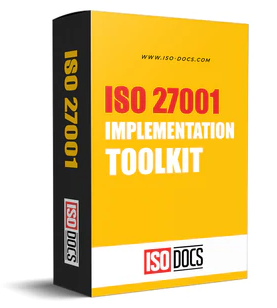Information Security: A Complete Guide to Safeguarding Your Organisation?
Introduction
Digitalization has become the singling out environment for business, communications, and the storing of crucial data by an organization; with such an infrastructure comes a long stream of prolonged and heightened risks. Attacks concerning cyber maleficence, data breach incidences, insider threats, and compliance issues continuously grow every year. This is where InfoSec comes in. InfoSec, in the broader sense, covers all activities that either directly or indirectly protect information-its confidentiality-whether in digital or paper form-from wrongful eyes, wrongful modification, or wrongful destruction.

What Is Information Security
Information Security (InfoSec) is a field that works to protect data, systems, and networks against threats to their confidentiality, integrity, or availability. This includes both electronic information, such as databases and emails through cloud storage, and physical information, such as printed documents and employee identification cards.
Why Information Security Is Important
Information is the most valued asset for any organization. There will be dire consequences, indeed, if such information leaks, be modified, or destroyed. Below are some reasons why Information Security is essential in such cases:
-
Protects sensitive data – Safeguards financial records, customer data, intellectual property, and trade secrets.
-
Builds customer trust – Clients are certain their personal data is protected.
-
Supports ISO 27001 compliance – A well-documented information security program ensures alignment with regulatory requirements.
-
Prevents loss of revenue – Cyber-attacks can result in fines, lawsuits, and loss of revenue.
- Ensures business continuity – Data and systems protection helps organizations recover from unforeseen circumstances faster.
How Does ISO 27001 Strengthen Information Security?
ISO 27001 is a global standard that provides the most recognized and acceptable framework for information security management systems. It assists organizations in:
- Identifying and assessing security risks
- Implementing security controls in a systematic manner
- Defining clear roles and responsibilities
- Monitoring security status and improving it on an ongoing basis
- Demonstrating compliance to customers, regulators, and auditors
By incorporating ISO 27001, organizations will instill a culture of security by design whereby information security is built right in and treated as a foremost consideration.
Importance Of Information Security For Organizations
This is essential both to comply with regulatory requirements and to foster growth of the business.
Benefits of Information Security:
-
Risk reduction – Abstaining from cyberattacks, fraud, and threats from insiders.
-
Regulatory compliance – Compliance of European GDPR, HIPAA, SOC 2 and ISO 27001 regulations.
-
Business continuity – Fortifying business operations through a software failure or disaster.
-
Customer trust – Exhibit behavior protecting their data.
- Competitive advantage – These days, many of its clients ask for ISO 27001 certification before they can really enter into partnerships.
Best Practices To Enhance Information Security
(ISO 27001 Approach)
Evidence-based approaches should be taken on organization settings for the successful implementation of information security management in accordance with ISO27001:
-
Developing Information Security Policy in ISO 27001 Scope: A strong policy should be created that expresses expectations for information security and data protection, going on to assign roles and responsibilities to appointed personnel, and is directed towards the annex A controls of ISO 27001. This will be the foundation for all security activities.
-
Periodic Risk Assessment: Identify, assess, and manage impending threats and vulnerabilities on a continuous basis. These assessments taken periodically will allow the organization to address risks developing into threats toward operations or regulatory compliance.
-
Sensitivity-Based Information Classification and Labeling: Data and systems are categorized on the basis of relevance or criticality and confidentiality. Proper labeling ensures sensitive information will get appropriate attention concerning protection and access control.
-
Control of Access: Unauthorized access should be restricted by multi-factor authentication, Role-based permissions and least-privilege principles. This curtails chances of insider threats and exposure of data to irrelevant negligent parties.
- Training for Employees Should be an Ongoing Process: Training should include information security policies, phishing attacks, safe handling of data, and reporting. Well-trained staff are the first line of defense in the event of violations of security.
Core Objectives Of Information Security
These three objectives are the basis for the working of information security and are sometimes called the CIA triad.
a) Confidentiality
- Restrict access to sensitive information only to authorized users.
- Example: Encrypting financial transactions.
b) Integrity
- Maintains a high level of accuracy of data and trustworthiness of data in systems used.
- Example: Making payroll data cannot be modified by anyone unauthorized.
c) Availability
- Ensures that information and system are available or functionally able when needed.
- Example: Cloud backup solutions and disaster recovery solutions.
These principles are explicitly infused into the requirements of ISO 27001, which then guide the policy and control forming process.
Conclusion
Information security is no longer an option; now, it is a necessity for any organization dealing with sensitive data. Therefore, organizations implement an ISMS according to ISO 27001, focusing on confidentiality, integrity, and availability, which will greatly decrease their risk of being non-compliant with regulations and gaining customer trust. Information security applies everywhere: from little start-ups to large enterprises. Identify the asset, assess the risk, mitigate with controls, and ensure continuous improvement.


